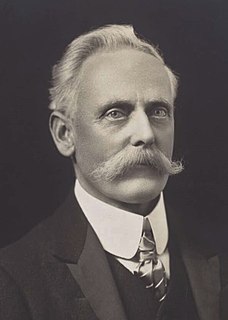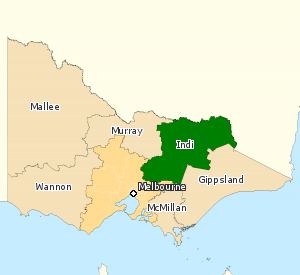
Federal elections were held in Australia on 18 October 1980. All 125 seats in the House of Representatives and 34 of the 64 seats in the Senate were up for election. The incumbent Liberal–NCP coalition government, led by Prime Minister Malcolm Fraser, was elected to a third term, defeating the opposition Labor Party led by Bill Hayden.

Federal elections were held in Australia on 10 December 1955. All 122 seats in the House of Representatives and 30 of the 60 seats in the Senate were up for election. An early election was called to bring the House and Senate elections back in line; the previous election in 1954 had been House-only. The incumbent Liberal–Country coalition led by Prime Minister Robert Menzies increased its majority over the opposition Labor Party, led by H. V. Evatt.

Federal elections were held in Australia on 29 May 1954. All 121 seats in the House of Representatives were up for election, but no Senate election took place. The incumbent Liberal–Country coalition led by Prime Minister Robert Menzies defeated the opposition Labor Party led by H. V. Evatt, despite losing the two-party preferred vote.

Federal elections were held in Australia on 28 April 1951. All 121 seats in the House of Representatives and all 60 seats in the Senate were up for election, due to a double dissolution called after the Senate rejected the Commonwealth Bank Bill. The incumbent Liberal–Country coalition led by Prime Minister Robert Menzies defeated the opposition Labor Party with a modestly reduced majority, and secured a majority in the Senate. Chifley died just over a month after the election.

Federal elections were held in Australia on 10 December 1949. All 121 seats in the House of Representatives and 42 of the 60 seats in the Senate were up for election. The incumbent Labor Party, led by Prime Minister Ben Chifley, was defeated by the opposition Liberal–Country coalition under Robert Menzies. Menzies became prime minister for a second time, his first term having ended in 1941.

Federal elections were held in Australia on 21 August 1943. All 74 seats in the House of Representatives and 19 of the 36 seats in the Senate were up for election. The incumbent Labor Party, led by Prime Minister John Curtin, defeated the opposition Country–UAP coalition under Arthur Fadden.
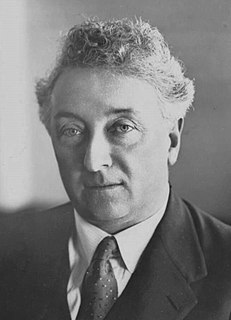
Federal elections were held in Australia on 23 October 1937. All 74 seats in the House of Representatives, and 19 of the 36 seats in the Senate were up for election. The incumbent UAP–Country coalition government, led by Prime Minister Joseph Lyons, defeated the opposition Labor Party under John Curtin.
Federal elections were held in Australia on 15 September 1934. All 74 seats in the House of Representatives, and 18 of the 36 seats in the Senate were up for election. The incumbent United Australia Party led by Prime Minister of Australia Joseph Lyons with coalition partner the Country Party led by Earle Page defeated the opposition Australian Labor Party led by James Scullin. Labor's share of the primary vote fell to an even lower number than in the 1931 election due to the Lang Labor split, but it was able to pick up an extra four seats on preferences and therefore improve on its position. The Coalition suffered an eight-seat swing, forcing Lyons to take the Country Party into his government.

Federal elections were held in Australia on 12 October 1929. All 75 seats in the House of Representatives were up for election, but there was no Senate election. The election was caused by the defeat of the Bruce-Page Government in the House of Representatives over the Maritime Industries Bill, Bruce having declared that the vote on the bill would constitute a vote of confidence in his government.
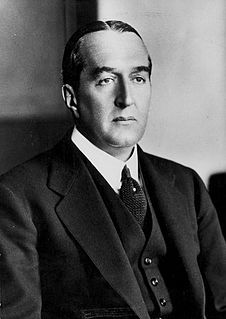
Federal elections were held in Australia on 14 November 1925. All 75 seats in the House of Representatives and 22 of the 36 seats in the Senate were up for election. The incumbent Nationalist–Country coalition, led by Prime Minister Stanley Bruce, defeated the opposition Labor Party led by Matthew Charlton.
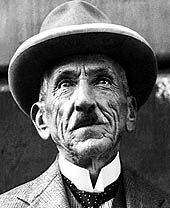
Federal elections were held in Australia on 16 December 1922. All 75 seats in the House of Representatives, and 19 of the 36 seats in the Senate were up for election. The incumbent Nationalist Party, led by Prime Minister Billy Hughes lost its majority. However, the opposition Labor Party led by Matthew Charlton did not take office as the Nationalists sought a coalition with the fledgling Country Party led by Earle Page. The Country Party made Hughes's resignation the price for joining, and Hughes was replaced as Nationalist leader by Stanley Bruce.

Federal elections were held in Australia on 13 December 1919. All 75 seats in the House of Representatives, and 19 of the 36 seats in the Senate were up for election. The incumbent Nationalist Party, led by Prime Minister Billy Hughes, defeated the opposition Labor Party led by Frank Tudor.

Federal elections were held in Australia on 5 May 1917. All 75 seats in the House of Representatives and 18 of the 36 seats in the Senate were up for election. The incumbent Nationalist Party, led by Prime Minister Billy Hughes, defeated the opposition Labor Party led by Frank Tudor.

Federal elections were held in Australia on 31 May 1913. All 75 seats in the House of Representatives, and 18 of the 36 seats in the Senate were up for election. The incumbent Labor Party, led by Prime Minister Andrew Fisher, was defeated by the opposition Commonwealth Liberal Party under Joseph Cook. The new government had a majority of just a single seat, and held a minority of seats in the Senate. It would last only 15 months, suffering defeat at the 1914 election.
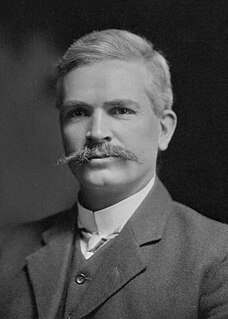
Federal elections were held in Australia on 13 April 1910. All 75 seats in the House of Representatives, and 18 of the 36 seats in the Senate were up for election. The incumbent Commonwealth Liberal Party led by Prime Minister Alfred Deakin was defeated by the opposition Labour Party, led by Andrew Fisher.
This is a list of the members of the Australian House of Representatives in the 10th Australian Parliament, which was elected at the 1925 election on 14 November 1925. The incumbent Nationalist Party of Australia led by Prime Minister of Australia Stanley Bruce in power since 1922 with coalition partner the Country Party led by Earle Page defeated the opposition Australian Labor Party led by Matthew Charlton. The Nationalist won 11 seats, they did not take at the 1922 election, although five of them were held by Liberal Party members, who had joined the Nationalist government after Bruce became Prime Minister in February 1923.
This article provides information on candidates who stood for the 1928 Australian federal election. The election was held on 17 November 1928.
This is a list of members of the Australian Senate from 1926 to 1929. Half of its members were elected at the 16 December 1922 election and had terms starting on 1 July 1923 and finishing on 30 June 1929; the other half were elected at the 14 November 1925 election and had terms starting on 1 July 1926 and finishing on 30 June 1932. The process for filling casual vacancies was complex. While senators were elected for a six year term, people appointed to a casual vacancy only held office until the earlier of the next election for the House of Representatives or the Senate.
The history of the Australian Labor Party has its origins in the Labour parties founded in the 1890s in the Australian colonies prior to federation. Labor tradition ascribes the founding of Queensland Labour to a meeting of striking pastoral workers under a ghost gum tree in Barcaldine, Queensland in 1891. The Balmain, New South Wales branch of the party claims to be the oldest in Australia. Labour as a parliamentary party dates from 1891 in New South Wales and South Australia, 1893 in Queensland, and later in the other colonies.






